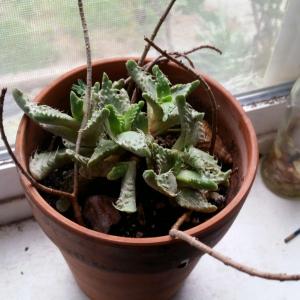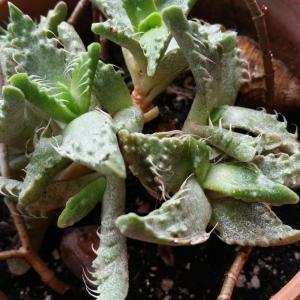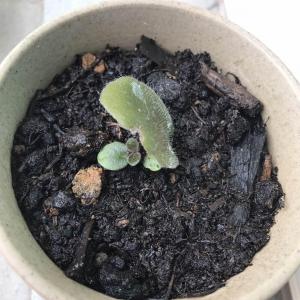成长记
Plantlin
2018年09月14日

Took some cuttings today to start over:) It has been outside for the last couple of months. taking it insidr for winter


0
0
文章
Miss Chen
2018年08月14日

Kalanchoes are perennial, short-day-blooming succulent plants that bear bunches of small blossoms on branching bracts. They are typically grown indoors, but can be placed outside whenever temperatures are warm enough, or if winter temperatures don't get low enough to harm them. Grown indoors or outside, kalanchoes still need bright light, dry periods between watering and room to spread their root system.

Hardiness Zone
While temperatures of 50 to 60 degrees Fahrenheit will keep the Kalanchoes in bloom, freezing temperatures can kill them. In zones 10 and 11, they can be planted directly in the landscape with minimal winter protection and will function as perennials. Even a few hours of temperatures near 40 degrees can kill unprotected kalanachoes.
Location
Kalanchoes are lovely in or out of bloom, but need short daylight hours to produce blooms. Kalanchoes planted where nighttime lighting reaches the leaves may not produce blooms as often as those planted where they have long stretches of darkness at night. In zones 10 and 11, summertime direct sunlight can burn the leaves. Planted near a deciduous tree with dappled shade, kalanchoes benefit from more winter sun and less summer sun.
Moving Indoors
North of zone 11, kalanchoes are grown as summer annuals, or must be planted in pots so they can be moved indoors when frost threatens. If they are set outdoors in an area with intense, full sunlight, they must be gradually adjusted to the lower light levels they will experience indoors.

Considerations
Heavy winds can break the succulent stems of kalanchoes or even uproot them. Place the container in a sheltered area. Kalanchoes also do not "play well" with other plants, in that they have a very demanding root system. They need plenty of root space from other plants and particularly don't compete well with grass. The more root room they have in the ground or in their containers, the larger the plant will grow and the more bloom clusters it can support.

Hardiness Zone
While temperatures of 50 to 60 degrees Fahrenheit will keep the Kalanchoes in bloom, freezing temperatures can kill them. In zones 10 and 11, they can be planted directly in the landscape with minimal winter protection and will function as perennials. Even a few hours of temperatures near 40 degrees can kill unprotected kalanachoes.
Location
Kalanchoes are lovely in or out of bloom, but need short daylight hours to produce blooms. Kalanchoes planted where nighttime lighting reaches the leaves may not produce blooms as often as those planted where they have long stretches of darkness at night. In zones 10 and 11, summertime direct sunlight can burn the leaves. Planted near a deciduous tree with dappled shade, kalanchoes benefit from more winter sun and less summer sun.
Moving Indoors
North of zone 11, kalanchoes are grown as summer annuals, or must be planted in pots so they can be moved indoors when frost threatens. If they are set outdoors in an area with intense, full sunlight, they must be gradually adjusted to the lower light levels they will experience indoors.

Considerations
Heavy winds can break the succulent stems of kalanchoes or even uproot them. Place the container in a sheltered area. Kalanchoes also do not "play well" with other plants, in that they have a very demanding root system. They need plenty of root space from other plants and particularly don't compete well with grass. The more root room they have in the ground or in their containers, the larger the plant will grow and the more bloom clusters it can support.
0
0
文章
Miss Chen
2018年08月10日

Cordyline fruticosa, also called Hawaiian ti, is an evergreen shrub that performs well grown outside in warm and humid, frost-free climates. It is hardy and requires little care growing throughout U.S. Department of Agriculture plant hardiness zones 10 through 12. It works well planted in containers and grown indoors or outside on patios. The plant is palmlike, growing up to 10 feet in height. Depending on the cultivar, the glossy foliage is purplish-red, green or streaked with combinations of purples, reds, white or yellow. In springtime, mature plants produce small yellow or reddish blooms.

Growing Outdoors
Step 1
Remove unwanted vegetation such as weeds or grass from a planting site located in partial sun to partial shade. Select a location with well-drained soil. Remove the vegetation by hand-pulling and raking, or treating the area with herbicide.
Step 2
Inspect the Cordyline fruticosa root ball for wrapping before planting, as wrapping roots slows root development. Pull any wrapping roots gently apart with your hands.
Step 3
Plant the Cordyline fruticosa at the same depth it was growing inside its pot. Dig a hole as deep as the container and one time wider. Place the plant into the hole and backfill with soil.
Step 4
Water Cordyline fruticosa after planting, saturating its root system. Water the planting site regularly to keep the soil moist, especially during warm, dry seasons.
Step 5
Prune to remove dead foliage or to propagate new plants from stem cuttings. Snip off dead leaves using pruning shears, as the plant's lower foliage dies as the plant ages.
Step 6
Treat any pest problems such as spider mites, scale or aphids. Use an insecticidal product safe for use on Cordyline fruticosa and apply according to the product's instructions.
Container-grown
Step 1
Grow the Cordyline fruticosa in a draining container that is one time larger than its root ball. Fill the container with a well-drained potting mix amended with a slow-release fertilizer. Follow package instructions concerning fertilizer amounts.
Step 2
Water the container regularly to keep the soil moist but not soggy. Water until it runs from the container's bottom drain holes. Fill a plastic spray bottle with water and mist indoor-grown Cordyline fruticosa plants weekly to create humidity.
Step 3
Situate outdoor containers in an area that receives partial sun to partial shade. Situate indoor containers in an area that receives bright, indirect light.

Step 4
Treat any pest problems such as spider mites, scale or aphids. Use a product safe for use on Cordyline fruticosa and apply according to the product's instructions.
Step 5
Snip off dead foliage. Use pruning shears and trim away any dead leaves.

Growing Outdoors
Step 1
Remove unwanted vegetation such as weeds or grass from a planting site located in partial sun to partial shade. Select a location with well-drained soil. Remove the vegetation by hand-pulling and raking, or treating the area with herbicide.
Step 2
Inspect the Cordyline fruticosa root ball for wrapping before planting, as wrapping roots slows root development. Pull any wrapping roots gently apart with your hands.
Step 3
Plant the Cordyline fruticosa at the same depth it was growing inside its pot. Dig a hole as deep as the container and one time wider. Place the plant into the hole and backfill with soil.
Step 4
Water Cordyline fruticosa after planting, saturating its root system. Water the planting site regularly to keep the soil moist, especially during warm, dry seasons.
Step 5
Prune to remove dead foliage or to propagate new plants from stem cuttings. Snip off dead leaves using pruning shears, as the plant's lower foliage dies as the plant ages.
Step 6
Treat any pest problems such as spider mites, scale or aphids. Use an insecticidal product safe for use on Cordyline fruticosa and apply according to the product's instructions.
Container-grown
Step 1
Grow the Cordyline fruticosa in a draining container that is one time larger than its root ball. Fill the container with a well-drained potting mix amended with a slow-release fertilizer. Follow package instructions concerning fertilizer amounts.
Step 2
Water the container regularly to keep the soil moist but not soggy. Water until it runs from the container's bottom drain holes. Fill a plastic spray bottle with water and mist indoor-grown Cordyline fruticosa plants weekly to create humidity.
Step 3
Situate outdoor containers in an area that receives partial sun to partial shade. Situate indoor containers in an area that receives bright, indirect light.

Step 4
Treat any pest problems such as spider mites, scale or aphids. Use a product safe for use on Cordyline fruticosa and apply according to the product's instructions.
Step 5
Snip off dead foliage. Use pruning shears and trim away any dead leaves.
0
0
求助
💫sammie💫
2018年06月30日

Why are my golden sedum's leaves wrinkling like this? i water it every 5 days and take it outside to get sun for most of the day, i live in zone 8. am i overwatering, underwatering, or am i giving it too much sun? i'm still relatively new when it comes to plant care, and id appreciate help from anyone.

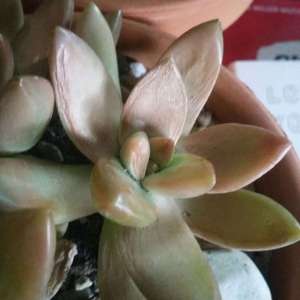


0
0
shirly mei:To me they look like you have been overwatering them. Make sure that you use cactus soil and only water them when the soil is completely dry. I leave my golden sedum all day outside too and I water them maybe every 2 weeks
Fion:Maybe the roots aren't growing.
meriunkat:succulents only need 6 hours of sunlight
WHdeckgardener:hi, hard to say...I have had success using good draining soil...cactus if possible. they like sun..or indirect sun. once established I only watered when the pot felt light. then good drink.
成长记
Pommy Mommy
2018年06月11日

Hydrangeas are my very favorite flower! Unfortunately their color is fading, though I can't complain because they've been in bloom for nearly two months! the center flower was potted & purchased this year, and the two outside plants were purchased & planted last year.
p.s. This is a little memorial for first Pomeranian, Foxy Loo, who loved gardening with me.
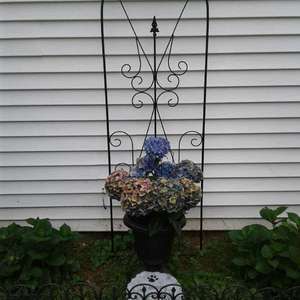

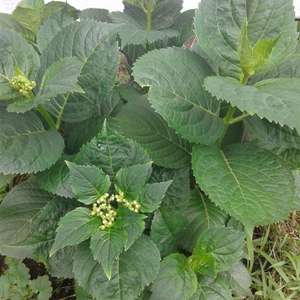
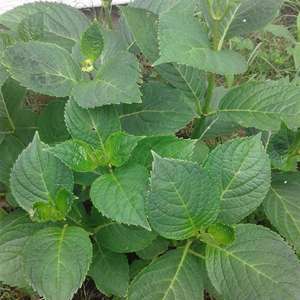
p.s. This is a little memorial for first Pomeranian, Foxy Loo, who loved gardening with me.




0
0














